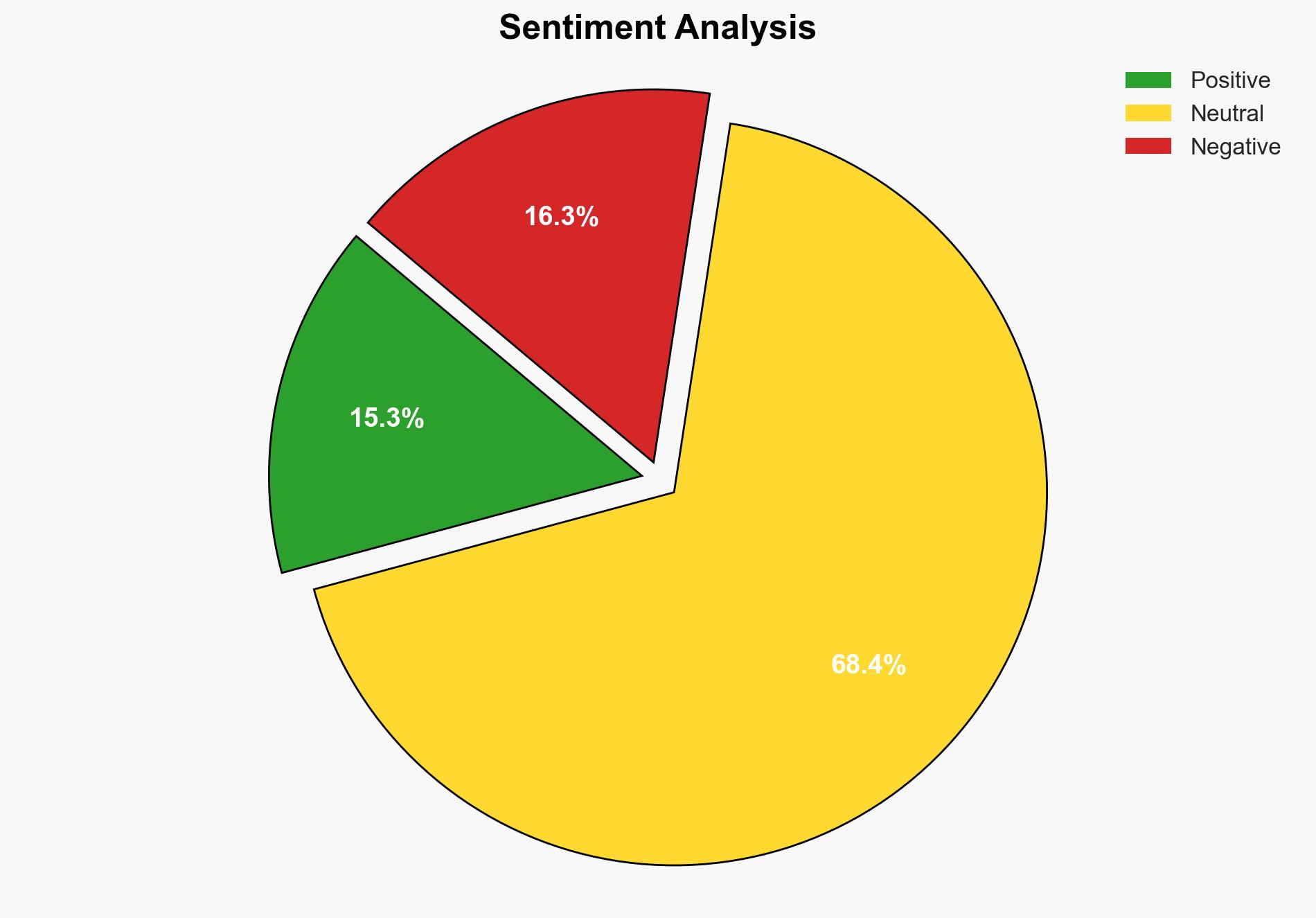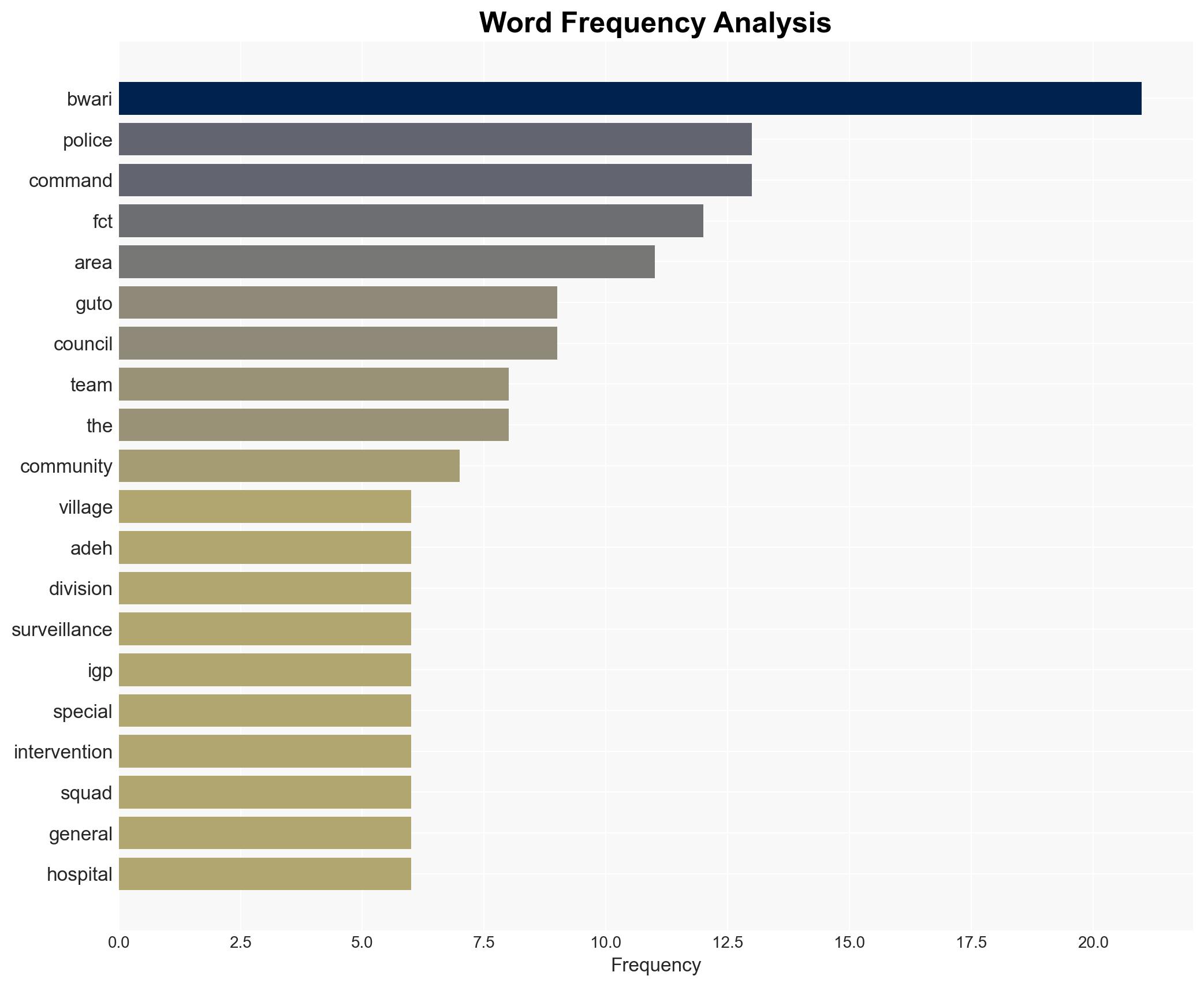Policeman killed in foiled FCT community kidnap attempt – The Punch
Published on: 2025-11-21
AI-powered OSINT brief from verified open sources. Automated NLP signal extraction with human verification. See our Methodology and Why WorldWideWatchers.
Intelligence Report:
1. BLUF (Bottom Line Up Front)
The attempted kidnapping in Guto Village, Bwari Area Council, highlights ongoing security challenges in the Federal Capital Territory (FCT). The most supported hypothesis is that the attack was part of a broader pattern of organized criminal activity targeting vulnerable border communities. Confidence level: Moderate. Recommended action includes enhancing intelligence gathering, increasing community engagement, and deploying additional resources to vulnerable areas.
2. Competing Hypotheses
Hypothesis 1: The attack was an isolated incident carried out by a local criminal group exploiting security gaps in the area.
Hypothesis 2: The attack is part of a coordinated effort by a larger organized crime network targeting border communities in the FCT to exert control and expand influence.
Hypothesis 2 is more likely due to the organized nature of the attack, the number of assailants, and the use of superior firepower, suggesting a level of coordination and resources beyond a local group.
3. Key Assumptions and Red Flags
Assumptions include the belief that local law enforcement has sufficient capacity to respond effectively to such threats. Red flags include the possibility of insider information being used by attackers and the potential for underreporting of similar incidents due to fear or lack of communication infrastructure. There are no clear indicators of deception in the official account, but the possibility of underestimating the threat level remains.
4. Implications and Strategic Risks
The incident underscores the risk of escalating violence in border communities, potentially leading to broader instability in the FCT. Political implications include pressure on local authorities to enhance security measures, while economic impacts may arise from reduced investment and increased insurance costs. Informational risks involve potential misinformation or panic spreading among residents, undermining trust in law enforcement.
5. Recommendations and Outlook
- Enhance intelligence operations to identify and dismantle organized crime networks operating in the FCT.
- Increase community engagement to improve information flow and trust between residents and law enforcement.
- Deploy additional security resources to vulnerable border communities to deter future attacks.
- Best-case scenario: Successful disruption of criminal networks leads to improved security and stability in the region.
- Worst-case scenario: Continued attacks lead to increased violence and instability, straining local resources and governance.
- Most-likely scenario: Intermittent attacks persist, requiring ongoing vigilance and resource allocation to manage threats.
6. Key Individuals and Entities
Josephine Adeh (FCT Police Command Spokesperson), Commissioner of Police FCT Command Miller Dantawaye.
7. Thematic Tags
Structured Analytic Techniques Applied
- Cognitive Bias Stress Test: Expose and correct potential biases in assessments through red-teaming and structured challenge.
- Bayesian Scenario Modeling: Use probabilistic forecasting for conflict trajectories or escalation likelihood.
- Network Influence Mapping: Map relationships between state and non-state actors for impact estimation.
Explore more:
National Security Threats Briefs ·
Daily Summary ·
Support us





